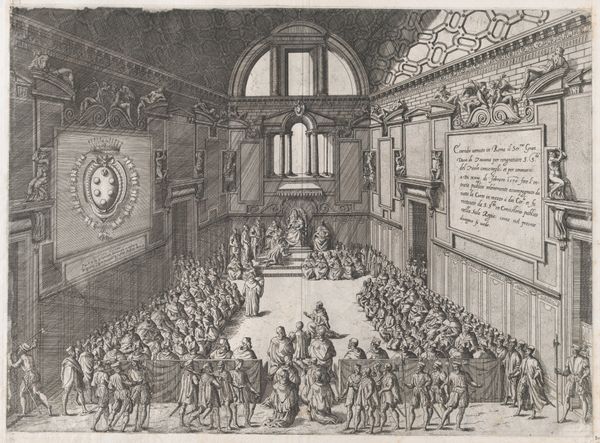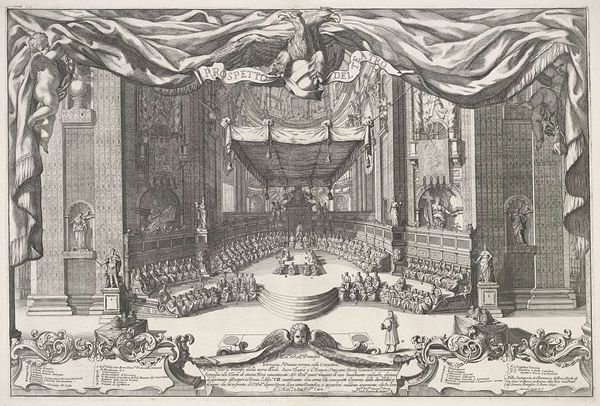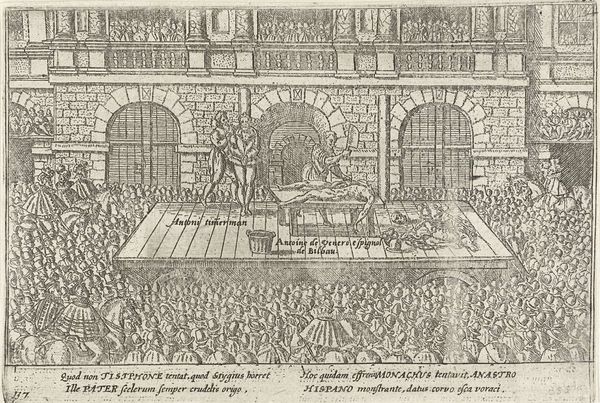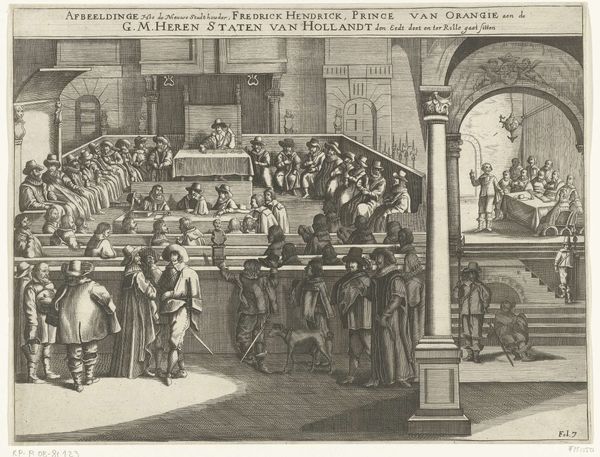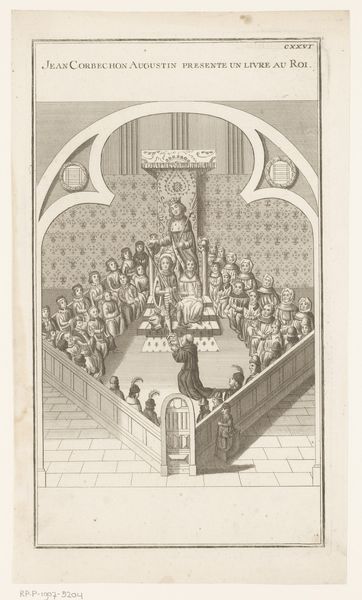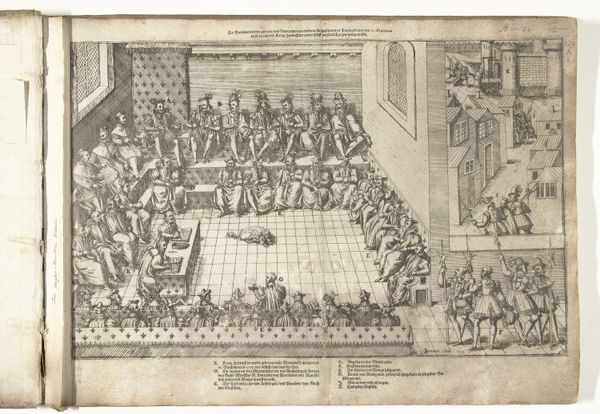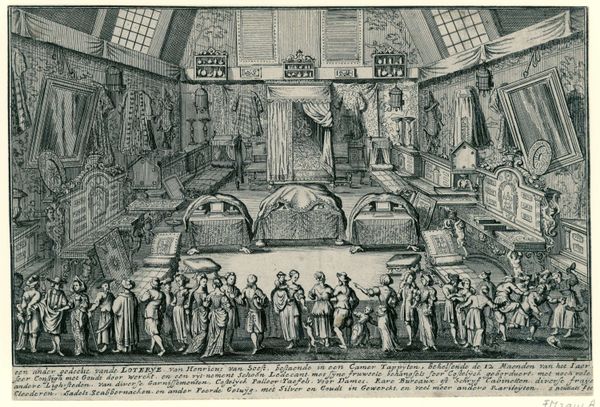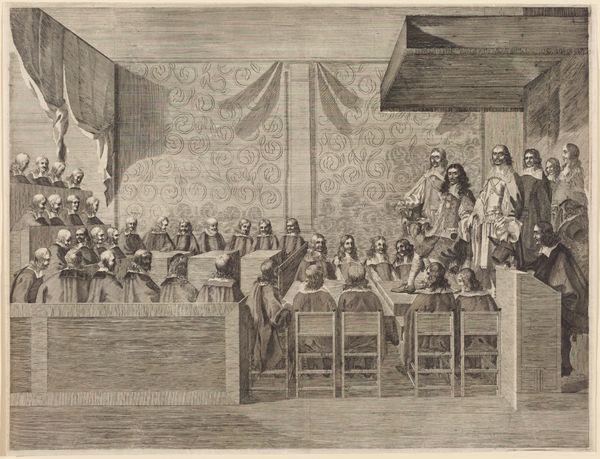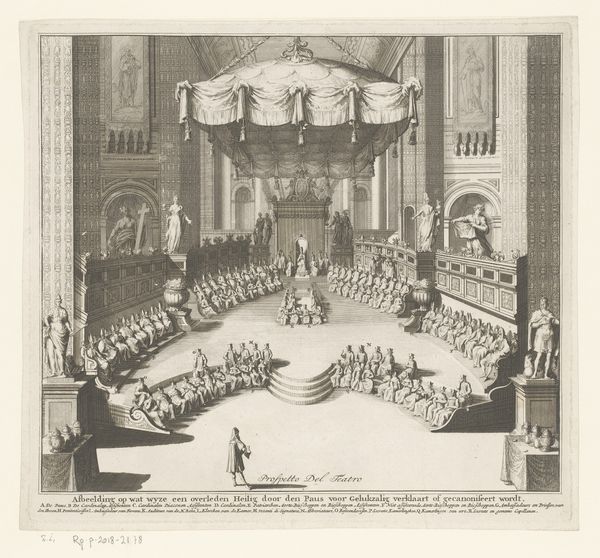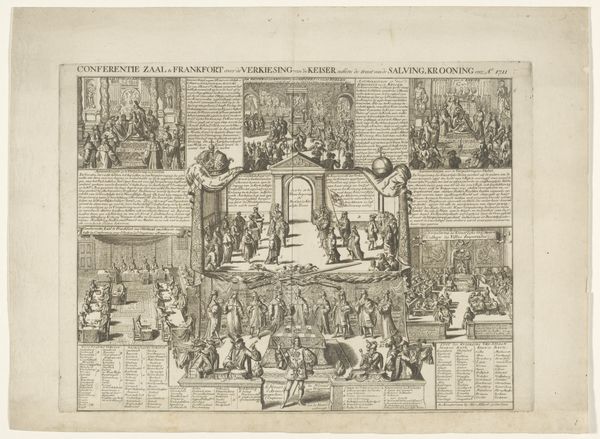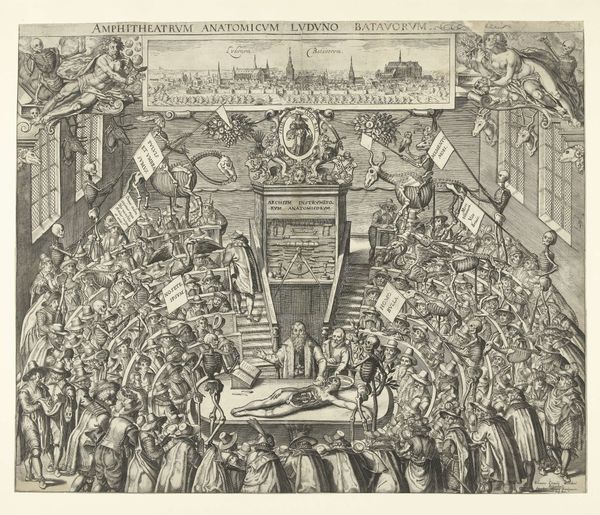
drawing, print, engraving
#
drawing
#
medieval
#
narrative-art
# print
#
11_renaissance
#
geometric
#
group-portraits
#
men
#
history-painting
#
academic-art
#
engraving
Dimensions: sheet: 13 3/16 x 19 9/16 in. (33.5 x 49.7 cm)
Copyright: Public Domain
Editor: So, this engraving is called "Speculum Romanae Magnificentiae: Council of Trent," dating back to 1565. It’s anonymous, but the Met has it listed as a print and drawing. I find the sheer number of figures assembled here so striking, they all look to be in deliberation within such a rigid, almost geometric, architectural space. What stands out to you? Curator: What a fascinating depiction of a pivotal historical moment, laden with enduring symbols! Tell me, what emotional cues do you gather from the uniformity of the figures? Is there a sense of harmony or perhaps suppressed tension? Editor: I feel like I can sense the weight of the debate. Even though it’s so ordered, the quantity of people in attendance amplifies tension. The individuals blur, which reads to me as them working in unison. Can you unpack some of the specific symbols embedded in the image? Curator: Certainly! Note the geometric precision of the architectural setting, how it almost seems to hold and contain the assembly. The cross at the center signifies, of course, Christian authority. Notice how the composition draws the eye to this central point. The figures are not merely bodies; they are participants in a grand historical narrative, symbols of the Church's power, of reformation and continuity. The text floating above and at the bottom act as documents that attempt to legitimize and record this moment for future audiences. Editor: It’s fascinating how symbols can crystallize entire belief systems. That geometric element that you've called out reminds me how much faith relies on creating order, and controlling the narrative. Does knowing it was made during the Counter-Reformation shift our understanding? Curator: Absolutely. The print serves not just as a record but also as propaganda. The message being clear: the Church is unified and powerful in the face of reformation, made manifest through symbolic language. It is an argument for their resilience, designed to resonate with the faithful. Do you notice how these historical visual symbols still resonate today? Editor: Definitely. Thinking about how these images would have functioned at the time versus how we interpret them now really highlights their ability to communicate specific intentions. I learned so much more than I thought possible. Curator: Indeed, seeing these images and unpacking their symbolism allows us to unravel layers of meaning, understanding how societies construct and perpetuate cultural memories. A valuable skill for anyone navigating our visually saturated world!
Comments
No comments
Be the first to comment and join the conversation on the ultimate creative platform.
